As devoted to the science of angling as I’ve become, I sometimes lament its sobering effects on the endeavor. It seems to me that installing physical definitions upon such fascinating muses as underwater ecosystems takes the romance out of spending time with a wandering mind in the company of water. Luckily, the beauty of wild things features an enigmatic mechanism for anomaly which, humans and fishermen both, have learned to mine, religiously. I’ve found New England to be thick with such a culture.
As a pre-teen, on vacation in Vermont’s Northeast Kingdom, I was disappointed to learn that the July temperatures had likely pushed deep the big brook trout of Labrador I eagerly hoped inhabited the glacial pond I had been eyeing from a map. However, I found promise in locating the pond’s deepest point—well over 70 feet—in an old lake cartographic book.
That afternoon, I trolled from a canoe over that point. The canoe reversed trajectory upon the strike, and a green body of more than three feet executed a fine tailwalk a few seconds before earning its freedom untouched. I wanted to declare fontinalis, but instinct yelled Esox. The state kept detailed accounts of waters featuring pike, and this one was not on the list.
Efforts to meet the fish again resulted in disappointment and intermittent bouts with insomnia, imagining the tossing surface of the pond and what lay beneath. The following winter, the local newspaper ran a story and photo of a man who caught a respectable pike through the ice, and the pond was added to the state’s list of pike waters.
That exciting afternoon was but a small production amid North Country drama. For just at the foot of the mountain capped by that pond glimmers Lake Willoughby—the deepest lake in Vermont, reaching some 300 feet. Another body, Bald Hill Pond, sits a few miles away by winding dirt road. Both are rumored to harbor lake monsters—Willy and Old Baldy, respectively—and Willoughby is said to feature an underwater tunnel near its deepest point, by which it shares Willy with nearby Crystal Lake. Neither monster is by name or criminal record a very threatening beast, but that’s just not the intention.
More Like This
I’ve often caught myself wondering why the North Woods is so rich with such wonders, and my native home in the South so comparatively defined and exposed. I suppose it would be remiss to omit the possibility that this is just bias by experience—as I’m much more familiar with Virginia than the hidden corners of New England—but I don’t grant such an explanation much merit. After all, it’s the local folk who propagate such rumors. I merely take note.
Personally, I’m partial to the idea that the North harbors more imaginative potential, for it contains countless glacial lakes full of wild fish, impenetrable bogs, and a few of the East’s last remaining large chunks of wilderness. It was in these places that, before the advent of evolutionary science, the mountain men of the day resorted to sticking the mastodons and saber tooth tigers that they couldn’t locate or explain, but for their deceased remnants.
The woods are darker in the North Country, of spruces and firs. Even the understory is often masked by a cloak of ferns. Under the influence of such boreal flora and the causative soil chemistry, mighty rivers like the Magalloway, Rapid, and Androscoggin run dark and rich. Famously, these waters harbor some of the last remaining populations of truly large native brook trout in the Lower 48. Tannin and shadows hide wild possibility from the eye.
Even the meager ponds that stipple the landscape carry an air of untamed potential. The visiting fly fisherman who wanders north in the summer will be discouraged to learn that the majority of such ponds are shallow—rarely exceeding 20 feet in depth. And having not been local in the winter and spring to record the location of springs, fishing will be a chore when July’s temperatures force brook trout into deep refuge. However voluminously limited they may be, though, their sheer multitude, and the uncharted, remote nature of many, totals a respectable amount of wonder. A strong number of these destinations by the name of Round, Long, Mud, and Unknown have captured my exploratory fancy at one time or another, and I find it just as well that I never found the time to discover most of them.
And so it is with the small, dark-water pond lapping shore just feet from my tent door. Before low-hanging fog egged on rain and darkness crept in on the heels of cold, I waded the rocky bank and concluded with fly and rod the pond to be home to the usual-sized natives, with the oldest individuals stretching a full foot. But as I lay bundled in my tent, and the elements shrink the perceptible world to within the confines of the blackened spruces lining the pond, I think I can feel the presence of a football brookie or two—of four pounds, or even five. Maybe even a lake monster, for good measure.





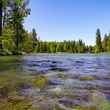
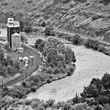
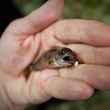



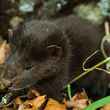




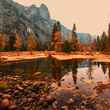




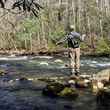




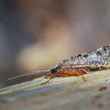
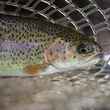

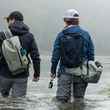
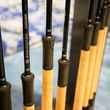
Comments